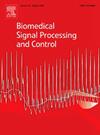A hybrid deep learning approach using XceptionNet and vision transformer for accurate chest disease detection from X-ray images
IF 4.9
2区 医学
Q1 ENGINEERING, BIOMEDICAL
引用次数: 0
Abstract
Chest radiography is a crucial imaging method in radiology to examine the chest cavity. These images are utilized to identify a range of diseases, such as lung cancer, pneumonia, covid-19, and tuberculosis. Though it is a basic and affordable tool, the accuracy of the interpretation relies heavily on the expertise of the radiologist. In remote and deprived healthcare settings, access to expert medical professionals is a major challenge. Although deep learning-based approaches have been widely exploited in the literature for chest X-ray analysis, they are limited in capturing the full context and long-range dependencies of the entire image. In this innovative research, a new hybrid vision transformer (ViT) architecture known as X-Vision is developed to accurately differentiate between covid-19, normal, and pneumonia from chest X-ray images. The key innovation lies in how features from XceptionNet and ViT are utilized: repeatedly integrated throughout the model’s processing pipeline. By merging the advantages of both the models, this approach had the potential to create more reliable and precise image classification systems. The findings indicate that X-Vision surpasses pre-trained models and attains an average accuracy of 99% for three different classes.
使用XceptionNet和视觉转换器的混合深度学习方法,用于从x射线图像中准确检测胸部疾病
胸部x线摄影是放射学检查胸腔的重要影像学方法。这些图像用于识别一系列疾病,如肺癌、肺炎、covid-19和结核病。虽然它是一个基本的和负担得起的工具,解释的准确性在很大程度上依赖于放射科医生的专业知识。在偏远和贫困的医疗环境中,获得专业医疗人员是一项重大挑战。尽管基于深度学习的方法已在文献中广泛用于胸部x射线分析,但它们在捕获整个图像的完整背景和远程依赖关系方面受到限制。在这项创新研究中,开发了一种称为X-Vision的新型混合视觉变压器(ViT)架构,可以从胸部x射线图像中准确区分covid-19,正常和肺炎。关键的创新在于如何利用XceptionNet和ViT的特性:在整个模型的处理管道中反复集成。通过合并两种模型的优点,这种方法有可能创建更可靠和精确的图像分类系统。研究结果表明,X-Vision超过了预先训练的模型,在三个不同的类别中达到了99%的平均准确率。
本文章由计算机程序翻译,如有差异,请以英文原文为准。
求助全文
约1分钟内获得全文
求助全文
来源期刊

Biomedical Signal Processing and Control
工程技术-工程:生物医学
CiteScore
9.80
自引率
13.70%
发文量
822
审稿时长
4 months
期刊介绍:
Biomedical Signal Processing and Control aims to provide a cross-disciplinary international forum for the interchange of information on research in the measurement and analysis of signals and images in clinical medicine and the biological sciences. Emphasis is placed on contributions dealing with the practical, applications-led research on the use of methods and devices in clinical diagnosis, patient monitoring and management.
Biomedical Signal Processing and Control reflects the main areas in which these methods are being used and developed at the interface of both engineering and clinical science. The scope of the journal is defined to include relevant review papers, technical notes, short communications and letters. Tutorial papers and special issues will also be published.
 求助内容:
求助内容: 应助结果提醒方式:
应助结果提醒方式:


